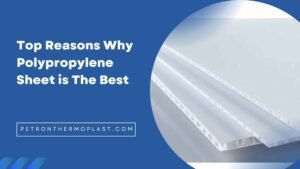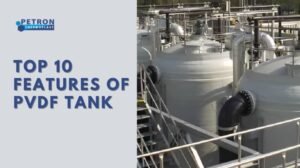Introduction
Why soaking PVDF membranes in methanol?
In the realm of molecular biology and protein research, the PVDF (Polyvinylidene difluoride) membrane has proven itself to be an indispensable tool. This remarkable material boasts exceptional durability, high binding capacity, and compatibility with a wide range of molecules. Yet, to harness the full potential of PVDF membranes, a seemingly curious step is often taken – soaking them in methanol. Why, you may ask? In this comprehensive exploration, we will delve into the depths of this technique, unraveling the intricacies of why soaking PVDF membranes in methanol is a common practice in laboratories worldwide.
Understanding the Basics
Before we dive into the specifics, let’s first understand what PVDF membranes are and why they are so integral to various laboratory applications.
PVDF, a synthetic polymer with a unique combination of properties, is widely employed in molecular biology research due to its excellent chemical resistance, mechanical strength, and thermal stability. These attributes make it a preferred choice for tasks such as Western blotting, protein sequencing, and nucleic acid transfer. When it comes to transferring proteins or nucleic acids from a gel onto a membrane, Western blotting, or Southern/Northern blotting, the PVDF membrane takes center stage.
The Role of Methanol
Now, let’s shift our focus to the star of the show: methanol. Methanol, also known as methyl alcohol or wood alcohol, is a colorless, volatile liquid with a slightly sweet odor. But what does this seemingly innocuous chemical have to do with PVDF membranes?
1. Wetting the Membrane:
One primary reason for soaking PVDF membranes in methanol is to facilitate the wetting of the membrane. When a dry PVDF membrane is exposed to an aqueous solution, it can be reluctant to absorb the liquid evenly. This uneven wetting can lead to issues during blotting procedures, compromising the quality and consistency of results.
Methanol, with its unique solvent properties, acts as a wetting agent, breaking the surface tension of water. This allows the PVDF membrane to quickly and uniformly absorb the aqueous solutions it will come into contact with during blotting procedures.
2. Enhancing Protein Binding:
In many molecular biology applications, the ultimate goal is to transfer proteins from a gel onto a PVDF membrane for further analysis. To achieve this, the proteins must adhere firmly to the membrane’s surface. This is where methanol plays yet another crucial role.
Soaking PVDF membranes in methanol promotes protein binding by creating favorable conditions for hydrophobic interactions. PVDF itself is a hydrophobic material, and methanol further enhances this property. When proteins are transferred onto the membrane in the presence of methanol, they tend to bind more tightly, ensuring that they remain immobilized for downstream applications such as antibody probing.
3. Reducing Background Noise:
In molecular biology, signal-to-noise ratio is of paramount importance. Researchers strive to obtain clear, precise results without interference from background noise. Methanol contributes to achieving this goal by reducing background noise during blotting procedures.
By soaking PVDF membranes in methanol, you effectively suppress nonspecific binding of proteins and other molecules to the membrane’s surface. This reduction in nonspecific binding ensures that your results are more specific and reliable.
4. Deactivating Residual Peroxide:
PVDF membranes are often treated with a mild oxidative treatment to improve their binding capacity. However, this treatment can leave behind residual peroxides, which could potentially interfere with your experiments.
Methanol, with its unique ability to deactivate peroxides, comes to the rescue. By soaking PVDF membranes in methanol, any residual peroxides are neutralized, ensuring that your membrane is in an optimal state for molecular binding.
The Soaking Process: Step by Step
Now that we’ve established the significance of soaking PVDF membranes in methanol, let’s walk through the practical steps involved in this process.
Step 1: Selection of Methanol Grade
Start by ensuring that you are using high-quality methanol. Research-grade methanol is recommended to minimize impurities that could adversely affect your experiments.
Step 2: Preparing the Methanol Solution
Prepare a methanol solution with an appropriate concentration. A common concentration is 100% methanol, but in some cases, researchers may use lower concentrations, such as 20% methanol in water. The choice of concentration depends on the specific application and the degree of hydrophobicity required.
Step 3: Immerse the PVDF Membrane
Carefully place the PVDF membrane into the methanol solution. Ensure that the membrane is fully submerged. The soaking time can vary but is typically in the range of a few minutes to half an hour.
Step 4: Remove Excess Methanol
After the soaking period, remove the PVDF membrane from the methanol solution. Gently blot the membrane on a clean, lint-free surface to remove excess methanol.
Step 5: Proceed with the Blotting Procedure
Now that your PVDF membrane is primed and ready, you can proceed with your blotting procedure, whether it’s Western blotting, Southern blotting, or any other application.
Safety Considerations
While soaking PVDF membranes in methanol offers several advantages, it’s essential to be mindful of safety precautions when working with methanol. Methanol is highly flammable and can be toxic if ingested or absorbed through the skin. Always work in a well-ventilated area, wear appropriate personal protective equipment, and follow institutional safety guidelines.
Conclusion
In the world of molecular biology and protein research, meticulous attention to detail is paramount. Every step in an experiment can have a profound impact on the outcome. The seemingly simple act of soaking PVDF membranes in methanol is a prime example of how a well-thought-out procedure can enhance the quality and reliability of results.
By acting as a wetting agent, enhancing protein binding, reducing background noise, and deactivating residual peroxides, methanol proves its worth as a valuable tool in the laboratory. When integrated into the workflow, this practice ensures that PVDF membranes perform at their best, contributing to the advancement of science and the pursuit of knowledge in the field of molecular biology. So, the next time you embark on a blotting experiment, remember the role of methanol in unlocking the secrets of PVDF membranes.
FAQs
How long should I soak the PVDF membrane in methanol?
Typically, PVDF membranes are soaked in methanol for about 1 to 5 minutes. However, the exact duration may vary depending on the specific protocol you are following. Check your Western blotting protocol for precise instructions.
Can I use other solvents instead of methanol for membrane activation?
While methanol is the most commonly used solvent for PVDF membrane activation, some protocols may suggest using ethanol. However, methanol is preferred because it is more effective at activating the membrane and facilitating protein binding.
What is the purpose of membrane activation with methanol?
Membrane activation with methanol makes the PVDF membrane more hydrophilic, allowing proteins to bind more effectively. It also helps remove any residual manufacturing debris or contaminants from the membrane’s surface.
Do I need to rinse the membrane after soaking it in methanol?
Yes, it is crucial to rinse the PVDF membrane with deionized water or transfer buffer after soaking in methanol. This step removes excess methanol and prepares the membrane for protein transfer.
Is methanol safe to use in the laboratory?
Methanol should be handled with care in the laboratory as it is flammable and toxic. Always use it in a well-ventilated area, wear appropriate personal protective equipment, and follow safety guidelines and regulations when working with methanol.
Can I skip the methanol activation step in Western blotting?
While it is possible to skip the methanol activation step, it is not recommended. Methanol activation significantly improves the binding efficiency of proteins to the PVDF membrane, resulting in better Western blot results. Skipping this step may lead to weaker or inconsistent signal detection.
You may also like – Polycarbonate Sheet | Acrylic Plastic Sheet | Custom Plastic Injection Molding




